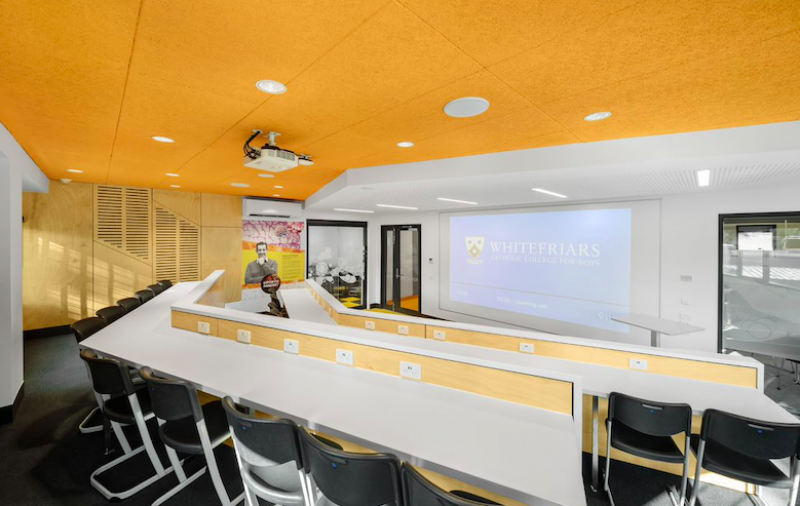Creative spaces for education

Photo: Catholic Ladies College, Eltham VIC–Currajeen Learning Centre 2016: a space for Year 12 students to thrive
By Amanda Meiklejohn & Tammy Beck, Williams Ross Architects
It is now well established in Australia that educators and learners have out-grown traditional classroom design. Pedagogy has become more diverse and sophisticated, and with that an increased demand for educators and designers to ‘think outside the box’ when developing learning spaces.
Williams Ross Architects has been developing school facility briefs since 1988. Back then, architects used to start facility design with an area schedule! Now the vast majority of us begin with a conversation — a plan to develop a collaborative process with staff, students and school communities to meet their needs.
This seemingly small but obvious change has turned education design on its head and, we believe, vastly improved the quality of education spaces. Here we would like to share with you a few of the principles and processes we have found valuable on this journey.
Collaboration in planning and design
We believe the foundation of innovation is collaboration. Innovative ideas in education requires collaboration with educators and students. It is essential to plan an inclusive process with clear objectives in which staff and students can participate at various stages of the design.
At Whitefriars College’s Science and Technology Building, staff were keen to explore different ways to design spaces to develop different learning settings — from project-based activities to small tertiary-like tutorial and lecture spaces to outdoor learning spaces. During the design phase, they set-up and trialled different learning spaces on campus to inform their practice and the eventual design.
This process also informed their decisions on furniture selection — another key factor in successful education spaces. Williams Ross Architects assisted in the proto-type, taking a simple square room and creating differing settings within the space. We found that modular furniture (tables, chairs and soft furnishings) gave the best flexibility, promoting learning in a comfortable setting which students and teachers were empowered to change.
Whitefriars College, Donvale VIC–Science and Technology Building 2017: where secondary learning meets tertiary.
Reflecting people and place through design
We find reflecting the values and history of each school fosters greater connection to the new and allows reflection of the past. Through this often comes great creativity and innovation.
At Catholic Ladies College in Eltham, the Currajeen Learning Centre provided the opportunity to research the existing site history. The building where the Sisters previously resided became a place for year 12 students to excel and enjoy. The domestic nature of the existing building inspired a material palette of warmth, using timber and focusing on easy connection to outdoor spaces. The Year 12 common room used bold colour to reflect the energy of the students, with pinks and purples used in the flooring as a way of designating spaces and for wayfinding. They are complemented by upholstery on bench seating, with remaining walls and furniture kept neutral. Historic photos were turned into the common room wallpaper, providing a visual and immediate connection to past students
Sustainability in design
High environmentally sustainable goals in all building projects is fundamental, and we know educational outcomes benefit from a high standard of indoor air quality, thermal comfort and natural light.
WRA start from first principles of good passive design for all our projects: getting the basics right. We have found that sustainable design has become a point of interest and engagement with all members of the school community, and with students in particular. Harnessing this passion for the environment has been a rewarding part of our work.
WRA design in as much, shaded natural light into spaces as possible. We filter natural light into circulation zones and maximise views and connection to the landscape. Working with staff and students at the planning stage informs our understanding of the landscape and how it could be accessed for teaching and learning.
Life-cycle considerations in the selection of materials also allow future cost savings through less maintenance and longer lifespans. When considering refurbishment projects, there should be an analysis of the re-use of existing buildings and materials where possible to reduce waste.
We have found these principles, along with others, help to enrich the collaborative process and bring creativity and practicality into education design. This ensures learning environments are relevant and reflective of those who inhabit them.
Related reading:



